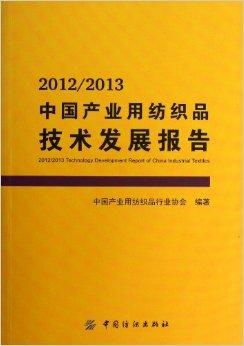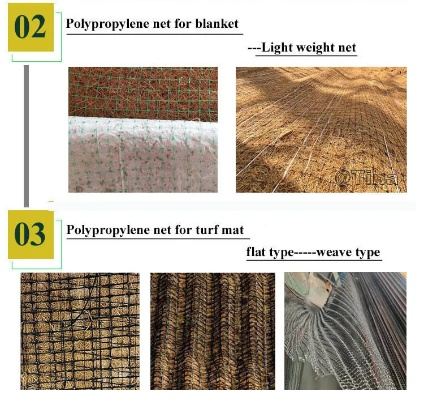COVID-19 and the Status Quo of Textile Industry:Challenges and Opportunities
: The Textile Industry's Adaptation to COVID-19: Challenges and Opportunities,Abstract: ,The COVID-19 pandemic has significantly impacted the global textile industry, challenging businesses to adapt and innovate in order to survive. This article discusses the challenges faced by the textile industry during the pandemic, such as reduced demand for apparel and footwear, supply chain disruptions, and labor shortages, while also highlighting potential opportunities for growth, such as increased demand for sustainable and eco-friendlier materials, digital transformation, and international trade expansion. The paper concludes with recommendations for businesses in the textile industry to adopt a proactive approach in order to thrive in the post-pandemic era.
COVID-19 and the Status Quo of Textile Industry: Challenges and Opportunities
The global textile industry has been significantly impacted by the COVID-19 pandemic. From factories shutting down to supply chain disruptions, the industry has had to adapt quickly to new challenges and opportunities that have emerged in the wake of this crisis. In this article, we will explore the current status of the textile sector and its potential for growth and innovation in the post-pandemic era.
Current Status of the Textile Sector

The textile industry is a crucial part of many economies, providing employment opportunities and income for millions of people worldwide. However, the pandemic has forced the industry to adapt to new working conditions and supply chain challenges, leading to some disruptions in production and delivery.
-
Supply Chain Disruptions: Many textile manufacturers rely on global supply chains, which were severely disrupted by travel restrictions imposed by governments around the world. This caused delays in product deliveries and increased costs for raw materials such as cotton, polyester, and dyes.
-
Labor Shortages: The outbreak led to widespread lockdowns in many countries, which resulted in labor shortages in some regions. This affected both manufacturing and distribution, as well as customer service, causing delays and higher prices for consumers.
-
Market Volatility: The pandemic has also caused significant market volatility for textile companies. With consumer confidence dropping, demand for many products has declined, leading to lower sales and reduced profitability for businesses.
-
Technological Innovations: Despite these challenges, the textile industry has also seen technological innovations that have helped mitigate some of the negative effects of the pandemic. For example, digitalization and automation have enabled faster response times and more efficient production processes, reducing the need for direct human intervention. Additionally, e-commerce platforms have provided new opportunities for small and medium-sized enterprises (SMEs) to sell their products directly to customers, without the need for large retail stores or distribution centers.
Potential Growth and Innovation in the Post-Pandemic Era
Despite the challenges faced by the textile industry during the pandemic, there are also significant potential growth areas and opportunities for innovation in this sector.
-
Sustainable Development: The focus on sustainability and eco-friendly practices has become increasingly important in recent years, and the textile industry can leverage this trend to differentiate itself from competitors and attract environmentally conscious consumers. By investing in renewable energy sources and reducing waste, companies can demonstrate their commitment to responsible business practices and gain a competitive edge in the market.
-
Digital Marketing: Digital marketing has become an essential tool for businesses in today's digital age. Companies can use social media platforms, influencer marketing, and other online channels to reach a wider audience and increase brand awareness. This approach can help textile companies tap into new markets and expand their customer base beyond traditional brick-and-mortar stores.
-
Customized Products: As consumers become more health-conscious and environmentally aware, customized products such as sustainable fabrics, eco-friendly dyes, and breathable materials may become popular. Textile companies can capitalize on this trend by offering customized solutions that meet specific customer needs and preferences, while also promoting sustainability and eco-friendliness.
-
Innovative Technology: Advances in technology, such as 3D printing and artificial intelligence (AI), can transform the textile industry and create new possibilities for innovation. For example, 3D printing technology could be used to produce high-quality, customized products at a lower cost than traditional manufacturing methods. AI could also help optimize inventory management, predict demand patterns, and improve supply chain efficiency.
In conclusion, the COVID-19 pandemic has had a profound impact on the textile industry, presenting both challenges and opportunities for growth and innovation. While the sector has experienced supply chain disruptions, labor shortages, and market volatility, it has also seen technological innovations that have helped mitigate some of the negative effects of the pandemic. As the world emerges from this crisis, the textile industry will need to adapt quickly to new market demands and technological advancements, while also focusing on sustainable development, digital marketing, customized products, and innovative technology to thrive in the long run.
疫情纺织品发展现状概述
随着全球疫情的持续蔓延,纺织品行业面临着前所未有的挑战和机遇,在此背景下,纺织品的发展现状呈现出以下特点:
市场需求变化
在疫情期间,消费者对防护用品的需求增加,尤其是防护服、口罩等关键纺织品,随着人们对健康和舒适度的要求提高,纺织品的功能性、舒适性和环保性成为市场关注的焦点。
纺织技术创新
在疫情期间,纺织行业积极应对市场需求变化,推动技术创新,新型材料的应用、数字化制造技术的普及、绿色环保理念的提升等都为纺织品行业的发展注入了新的活力。
行业发展趋势

疫情纺织品行业的发展趋势主要体现在以下几个方面:
(1)功能性纺织品:随着人们对健康和舒适度的要求提高,功能性纺织品成为市场的新热点,抗菌、防过敏、透气等特殊性能的纺织品受到消费者的青睐。
(2)绿色环保纺织品:随着环保意识的提高,绿色环保纺织品成为行业发展的趋势,新型环保材料的应用、可持续制造技术的推广等都为纺织品行业的发展提供了新的动力。
疫情纺织品发展案例分析
以下是一个疫情纺织品发展的案例分析,以供参考:
某品牌防护服的生产与销售情况
该品牌在疫情期间积极应对市场需求变化,推动技术创新,他们采用了新型材料和技术手段,生产出了一系列高性能的防护服,在销售方面,他们通过线上销售渠道和线下实体店等多种方式,满足了消费者的需求,他们还注重产品的环保性和可持续性,积极推广绿色生产理念。
某地区口罩生产线的运行情况
在某地区,口罩生产线在疫情期间得到了充分的应用,他们采用了先进的数字化制造技术,提高了生产效率和质量,他们还注重产品的舒适性和透气性,为消费者提供了更好的使用体验,他们还积极推广绿色环保理念,采用环保材料和生产工艺,降低了生产过程中的环境污染。
疫情纺织品发展现状的补充说明
为了更好地了解疫情纺织品的发展现状,我们可以从以下几个方面进行补充说明:
新型材料的应用
在疫情期间,新型材料的应用为纺织品行业的发展注入了新的活力,纳米材料、生物降解材料等新型材料的出现,为纺织品提供了更好的性能和功能,这些新型材料的应用不仅可以提高纺织品的耐久性和使用寿命,还可以提高纺织品的环保性和可持续性。
数字化制造技术的普及
随着数字化制造技术的普及,纺织品的生产过程越来越智能化、自动化,这不仅提高了生产效率和质量,还为纺织品行业带来了更多的发展机遇,数字化制造技术将继续为纺织品行业的发展提供新的动力。
绿色环保理念的提升
随着环保意识的提高,绿色环保理念已经成为纺织品行业发展的重要趋势,纺织品行业将继续注重产品的环保性和可持续性,推动绿色生产理念的发展,纺织品行业还将积极探索新的绿色生产模式和技术手段,为消费者提供更好的产品和服务。
疫情纺织品行业的发展现状呈现出市场需求变化、技术创新、行业发展趋势等多方面特点,在未来的发展中,纺织品行业将继续注重产品的性能、舒适性和环保性,推动绿色生产理念的发展,纺织品行业还将积极探索新的生产模式和技术手段,为消费者提供更好的产品和服务。
Articles related to the knowledge points of this article:
Exploring the Natural Elements of Liyun Textiles Raw Materials
The Fabric of Future:Classification and Application of A,B,C Textiles
The Global Fabrics Expo A Journey to the Heart of Canadian Textiles



